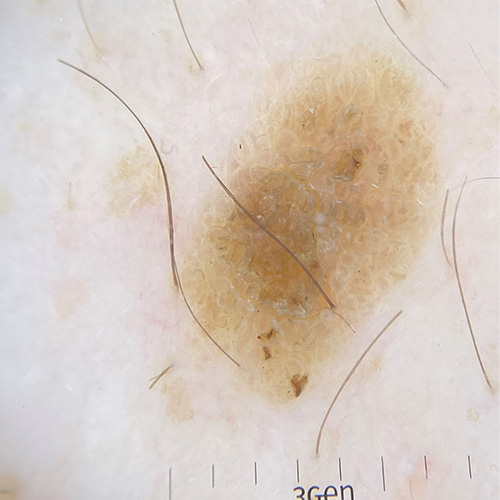Seborrhoeic keratoses
Seborrhoeic keratoses are benign skin lesions that have a waxy or warty ‘stuck-on’ appearance, and are commonly pigmented. They can occur anywhere on the body. See here for photos of seborrhoeic keratoses. Seborrhoeic keratoses typically start to appear from the age of 30, and the number of lesions increases with age. They are the most common pigmented lesions in people older than 50 years. Lesions can sometimes appear postpartum (especially around the breasts).
Seborrhoeic keratoses can become irritated and inflamed. This can precede spontaneous regression.
Clinically, flat seborrhoeic keratoses (particularly on the face or limbs) can be difficult to distinguish from solar lentigines or lentigo maligna. If the diagnosis is in doubt, histological confirmation is recommended.
Seborrhoeic keratoses do not need treatment, because the lesions are not premalignant. However, treatment can be considered for cosmetic reasons, or for irritated or recurrently inflamed lesions. Options for treatment are destructive methods such as cryotherapy, shave excision, curettage, diathermy and ablative laser. Excision is rarely needed.

Photo sourced with permission from Dr Michelle Goh.

Dermoscopy x 10. Photo sourced with permission from Dr Michelle Goh.
